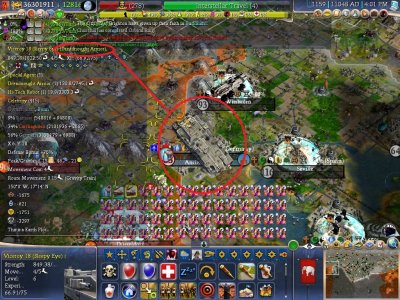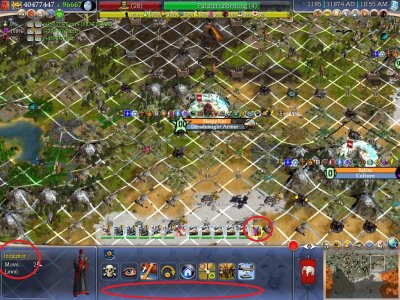Oooooh, sounds very intriguing.
Thanks

Expanding this system to other types of buildings could be great too.
Well, theoretically, this should apply to all network structures – transport, trade, information, etc. At the same time, by the information network, I naturally mean not only the Internet, but also mail, telephone, telegraph.
At the same time, for example, fairs "built up" over local markets are a whole epoch in the development of early capitalism.
On the other hand, the Metcalf rule is the perfect embodiment of the "snowball" mechanics, which is undesirable in principle. Therefore, the positive scale effect should be balanced by the negative ones. The most obvious option is an increase in infectious morbidity when using trade and transport facilities.
Now, what may be considered a superharbor in ancient Rome would not be a superharbor today-which could be done by obsolence? In a way, it would prevent a city from being a super naval base for the rest of the game. It would give a chance for other civs to reinvent themselves in new eras.
Well, every new generation of harbors should be accompanied by a new generation of superhavans.
Now, the thing about nomads:
Looking ahead, I will say that I completely agree with your idea, but terrible boredom requires arguing about motivation. In short, I have nothing to do right now.
When there were nomadic empires, it was usually do that where the plains were.
This is not quite true.
1. The traditional "centers of power" of the nomads existed where there were plains, but not only. For example, for the creators of the Turkic Khaganate and the Mongols, this is the vicinity of the Khangai Mountains. At the same time, the starting point for the expansion of the Turks of the Khaganate is Altai.
The most powerful and organized states on the territory of present-day Kazakhstan were located not on the vast northern plain, but in the Semirechye, near the Tien Shan Mountains.
The reasons are quite banal. Mountains
A). this is a diverse climate, not only depending on the height, but also on the position of the slopes (north/ south). As a result, nomads living nearby can feed cattle all year round, instead of huge movements in latitude "following grass and water." At the same time, long migrations are unavoidable costs. And problems with mobilization.
B). in most cases, this is just water (the most important factor for a cattle breeder). Plus fish glue is necessary for compound bows.
C). and finally, nomads need... a forest. Among other things, wood is a material for bows and arrows, charcoal is fuel for smelters and blacksmiths. In general, mountains are what the nomadic military–industrial complex works around.
2. Any large nomadic state in Mongolia almost automatically included forest zones in the north and east. At the same time, the northern Mongols (Buryats) simply live around Lake Baikal. Meanwhile, the territory of Buryatia is even now 83% forest, and to a large extent – mountain forest.
3. The captured agricultural territories at the same time included not only a trivial forest. Southern China is a tropical forest, and on an area comparable to Mongolia itself.
Also for migrations, nomads would migrate from one set of plains to the next set of plains.
The nuance is that in this case we are still not talking about migrations of peoples, but about the movements of relatively compact armies. At the same time, even in the case of tribal migrations, everything is not so clear.
In fact, it was very important for a nomadic army to not make their seasonal camp in area where there no plains or their horses would die.
In fact, in winter it is cold and regularly hungry in the steppe, nomads lose a lot of horses and livestock. But if you "set up a seasonal camp" with the conquered farmers, everything looks much nicer. As a result, this is a fairly ordinary life hack.
In fact, an agrarian society, would be better able to keep an army in a forest year long through supply chains vs a nomadic army, which has to always be on the move so that their horses can eat. I
The fact is that the horses of nomads can just as well eat the stocks of farmers. Which, by the way, also contain draft cattle. Or there are no stocks yet: even a field that has not been harvested is a great place for grazing.
In general, everything ultimately depends on the concentration of nomads per square kilometer. In any case, a relatively compact army. robbing everything out of hand, she will feel herself on an agricultural territory... much better than in the steppe.
I believe a good way to represent this in game would be that the light cavalry have a lighter logistical weight when on a plains tile vs a forest tile.
And... in the end, despite all the comments above, I agree. Moreover, since the introduction of new tags is inevitable in this case, they should be used more widely. It is obvious that not only light cavalry will face logistical problems in the same forest.
Keep in mind that nomadic armies are very tribal and very prone to infighting
Hmm ... So, the nomads with their tribal organization turned out to be organized at the level of Rome and, that is, qualitatively better than the feudal and tribal armies of farmers. At first glance, this can be considered a unique option for Genghis Khan personally, but there is one problem.
Many of the "technologies" of Genghis are direct borrowing from the Khitan. Who were very close predecessors of Genghis. And this chain stretches all the way to the Xiongnu. In general, the strong leaders of the eastern nomads were not exactly put on the conveyor belt, but ...
In fact, nomads
1) much more mobile and contact than farmers. In other words, tribalism and isolationism are inevitably less developed among them than among barbarian farmers or in feudal kingdoms.
2) Do not have "natural fortresses" of mountain and forest barbarians, or the same + also castles in the case of feudal lords.
3) Theoretically, they can migrate, but in practice, each piece of the steppe already has owners. And they will be VERY against it.
That is, nomads are more susceptible to coercion by the central government. If at the same time there is enough surplus product to maintain this power... In Mongolia, unlike poorer Western nomads, there is enough of it. As a result, we see what we see.
Р.S. There is one more point. Ideally (quite ideally) it is worth separating food and non-food logistics. Food "fines" can be compensated at the expense of the terrain, non–food ones are not - and then everything is summed up. It won't make any difference for hand–to-hand units, quite a little - for early gunpowder, but ... Already in relation to the "heavy" mechanized formations of the Second World War, it looks very different. Well, the Soviet divisions of the Cold War in terms of the daily consumption of ammunition in the offensive persistently tried to surpass the entire French army, and not even in 1916. In general, the MLRS compound has a huge "appetite", but it has nothing to do with food

.


 .
.
 again – despite the fact that I sincerely hate writing a lot. In general, I will spread it gradually.
again – despite the fact that I sincerely hate writing a lot. In general, I will spread it gradually.

